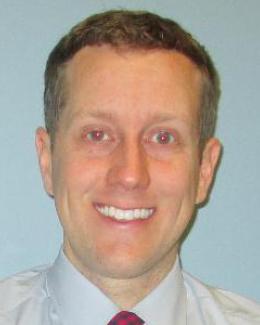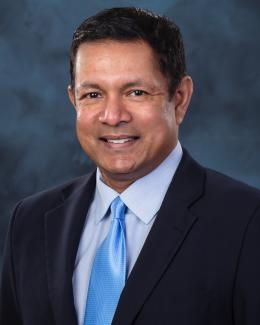
In the mid-1980s, Balendra Sutharshan moved to Canada from the island nation of Sri Lanka.
That move set Sutharshan on a path that had him heading continent-spanning collaborations and holding leadership posts at multiple Department of Energy national labs. In February, he joined Oak Ridge National Laboratory as the associate laboratory director of the Isotope Science and Engineering Directorate, or ISED.
The directorate, which was formed in October 2020, is charged with producing unique isotopes for various uses, developing enrichment technology and operating ORNL’s nuclear facilities. The broad science portfolio for ISED includes figuring out how to make tough-to-produce materials, such as plutonium-238 to power NASA’s deep space missions and actinium-225 for use in potential treatments for aggressive forms of cancer.
Leading such a complex directorate requires vision — being able to develop a plan and go after it with a passion. Sutharshan first began developing that quality not in a radiological laboratory or at a nuclear reactor, but under the Golden Arches.
“I arrived in Canada and started working at McDonald’s, making $4 an hour,” Sutharshan said. “It was an experience that gave me the drive to seek the very best education, place my focus into my studies and work toward building the kind of life I wanted.”
The then-17-year-old Sutharshan would eventually attend the University of Toronto for his undergraduate degree in chemical engineering. He went on to the Massachusetts Institute of Technology to pursue a doctorate in nuclear engineering. It was there that he witnessed firsthand the life-altering power of isotopes.
While studying boron neutron capture therapy, he helped build a machine for early clinical trials to treat cancer. The research allowed Sutharshan to do applied, hands-on work. And in several early cases, he saw a seemingly miraculous recovery of cancer patients. But delivering the right isotope to the right target, where it would emit a burst of radiation and kill cancerous cells, remains a challenge today.
“We know through numerous studies how promising medical isotopes are for treating cancer,” he said. “But we’ve not advanced very far in the last three decades in accurately targeting the tumor site.”
After graduating from MIT, Sutharshan found an opportunity with Westinghouse Electric Corporation, allowing him to stay close to Boston, a city he loves. Sutharshan did not expect to stay with the company for long. Over the next two decades, he traveled the globe while taking on more responsibility, including leading roles in nuclear plant design. In the process, he said, he experienced many cultures and expanded his knowledge beyond nuclear reactors — into what it takes to build an effective team.
“During those years, I spent a lot of time in nearly 20 countries, which really shaped my appreciation for diversity and inclusion,” Sutharshan said. “What I saw firsthand was that a diverse team offers outside-the-box thinking, making anything possible. And that experience has stuck with me for the last 15 years.
“If you have the right composition of people, cultivated by an organization that truly believes in diversity and inclusion, it creates an organic and competitive environment that can’t be beaten.”
For the last 10 years, Sutharshan has employed that team-building outlook to leadership positions at Argonne National Laboratory and Pacific Northwest National Laboratory. Now, he is ready to learn more about the magic of the Smoky Mountains. He is especially excited to explore the waterways and hiking trails of East Tennessee.
“I plan to trade in my snow skis for water skis,” he said with a laugh.
As the leader of ISED, he is ready for the challenge of continuing to grow one of ORNL’s newest science directorates. He sees a strong foundation with a staff of leading scientists and engineers who produce isotopes not made anywhere else in the world, who pursue new enrichment technologies and who operate ORNL’s advanced hot cell facilities. His goal is to grow the team, as well as the organization’s impact on everyday life.
“My job is to ensure we have the right collection of people and enable them to do their jobs. We have a team passionate about the mission and I’m excited because this organization can do a lot of great things,” he said. “If we put our minds to it, we can change the world and develop new ways to use these isotopes, from eradicating cancer to providing clean energy. What greater impact is there on society, if we can deliver on those promises?”
UT-Battelle LLC manages ORNL for the Department of Energy’s Office of Science, the single largest supporter of basic research in the physical sciences in the United States. The Office of Science is working to address some of the most pressing challenges of our time. For more information, please visit https://energy.gov/science.



